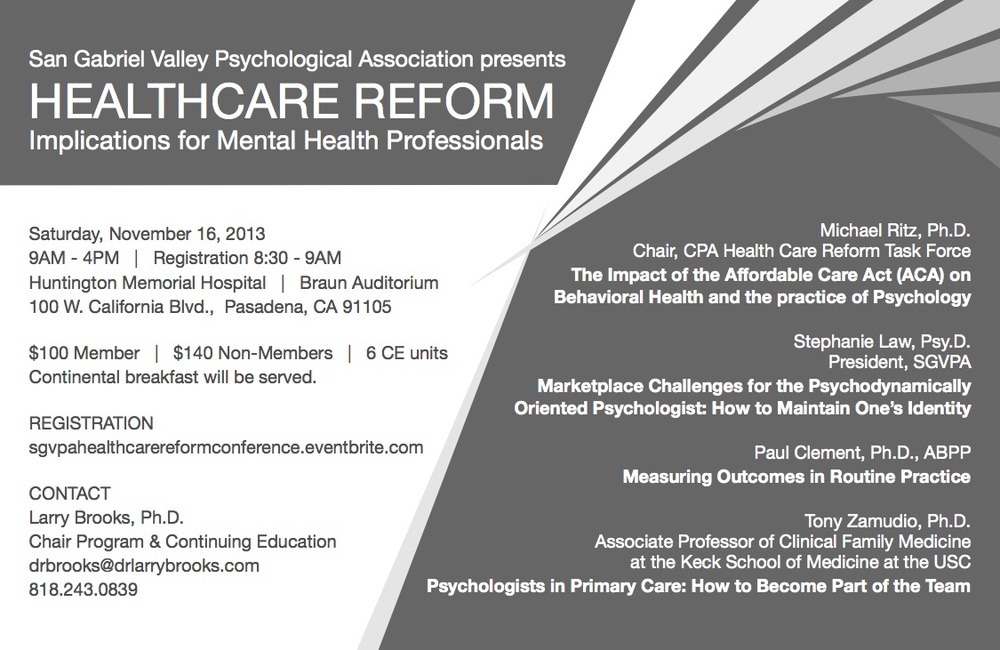I’d like to offer a glimpse into the current landscape set before us, and what the Affordable Care Act (ACA), in part, is trying to address. If you’re like me, seeing numbers can be helpful. And despite my fears and hesitations about the ACA, these numbers and figures help me understand some of the rationale behind the ACA and provide some empathy for its attempts to address a serious problem. What about to share are a lot of numbers. Don’t get lost! There is a purpose behind them and if you can stay with them, I think you’ll find yourself more informed.
Healthcare Spending in the US reached $2.6 trillion in 2010, which is 17.6% of our gross domestic product (GDP). It’s expected to rise to $4.7 trillion or 19.8% of GDP by 2020. These rising costs are due in part to the impact of major coverage expansions in 2014 and beyond, as a result of the ACA and projected Medicare enrollment growth. By 2020, estimates suggest the government will pay 49% of all healthcare costs (Keehan et al., 2011). In 2009, only 1% of the US population accounted for 63.6% of all healthcare spending. A different half of the population accounted for only 2.9% of all spending (Cohen & Yu, 2012). Due to these numbers, there is a growing awareness that medical and mental-health problems are often linked. Patients with diabetes and heart disease have twice the rate of anxiety and depression as the general population, which in turn makes it harder to make healthy changes like losing weight. Hence, a key to bending this cost curve is development of care systems that target that part of the population accounting for the greatest costs.
Here’s another interesting fact, approximately 25% of primary care patients have one or more disorders – mostly anxiety, depression, or substance abuse, according to a recent JAMA study. Time pressed primary care doctors typically hand such patients a referral to a mental health specialist, but only 60% of these patients followed through, according to a 2002 study in Seattle conducted by the University of Washington. In contrast, in an integrated practice, doctors can do a “warm handoff” instead, personally introducing patients to a therapist on site. By integrated, the experts mean a clinic or hospital that houses a wide variety of providers, including ones for mental health. Many studies have shown that integrated care can reduce patients’ depression and cut costs. One University of Washington study of 1,800 patients found that providing a year of integrated care cost $600 a patient but saved an average of $4,000 in lower medical bills over the next four years. It is with this in mind that patient centered medical homes and Accountable Care Organizations (ACO’s) have been piloted and tested for persons with chronic illness, including serious and persistent mental illness (Grumbach & Grundy, 2010) A perfect example of an ACO is the Kaiser Hospital system here in California, which is a group of hospitals, physicians, and other providers who share responsibility for the cost and quality of care for a defined patient population. What experts seem to be saying is that significant savings are possible but ACO’s require intensive collaboration and investment to support care management and exchange of sensitive performance data. What are being included in these ACO’s are psychologists and mental health clinicians. However, one has to keep in mind that the kind of work psychologists are doing in ACO’s is very different than the work done in private practice offices. Psychologists who work in the ACO setting are doing important work but the pace is frenetic, sessions typically last 15 to 20 minutes, and group therapy is common. Patients are commonly seen only 3 – 5 times and provided problem solving skills, relaxation techniques, or psycho-education. As you can see, there is a tension represented here. An ACO’s design is attempting to target more patients who have psychological issues because to do so will actually result in more savings over the long haul. And if more people are going to be insured, because of the ACO, then you can see why hospitals want to include more psychologists in house. However, like I just mentioned, the kind of treatment provided in the hospital is of a very different kind than provided in the private practice model.

